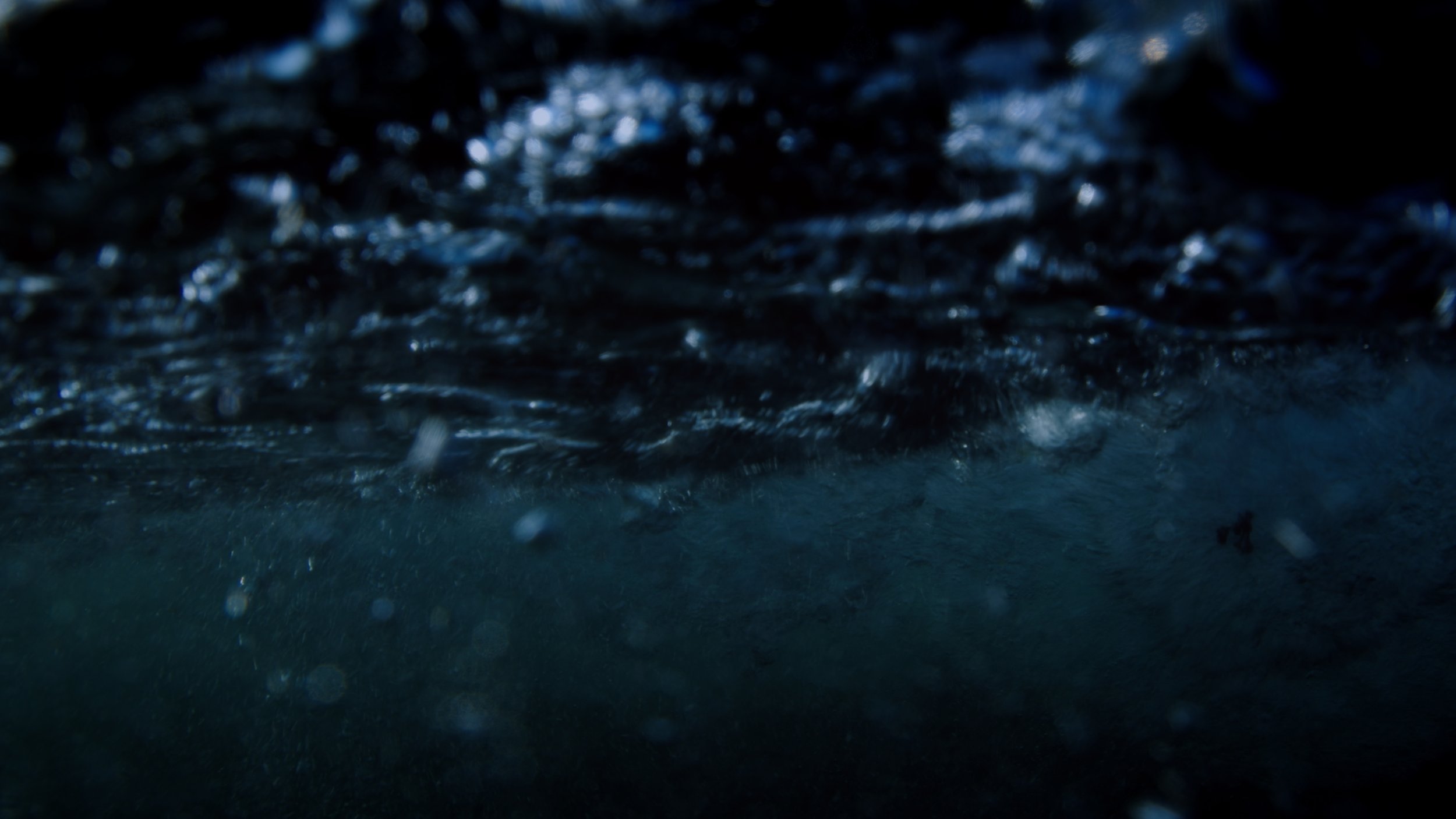
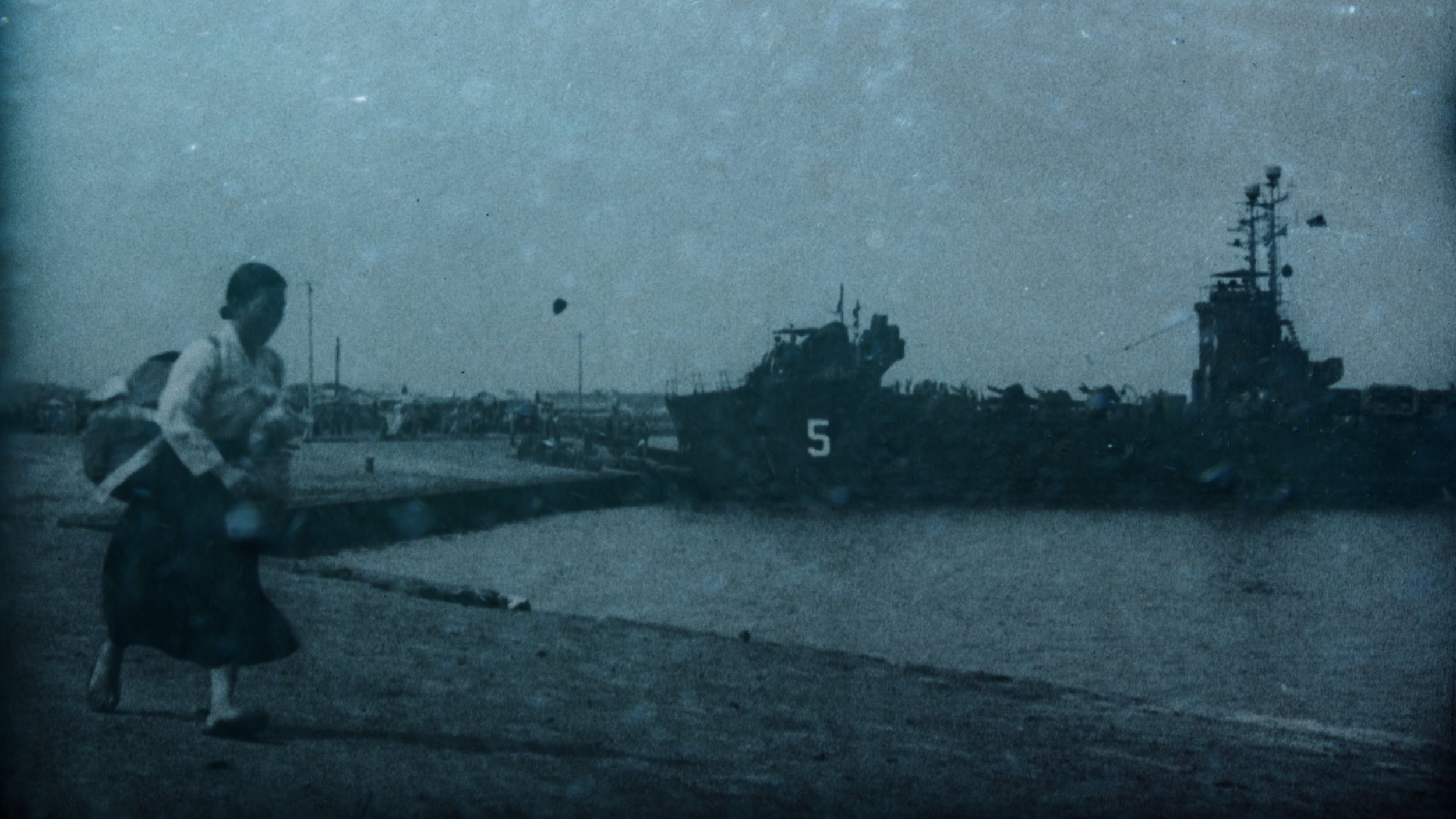
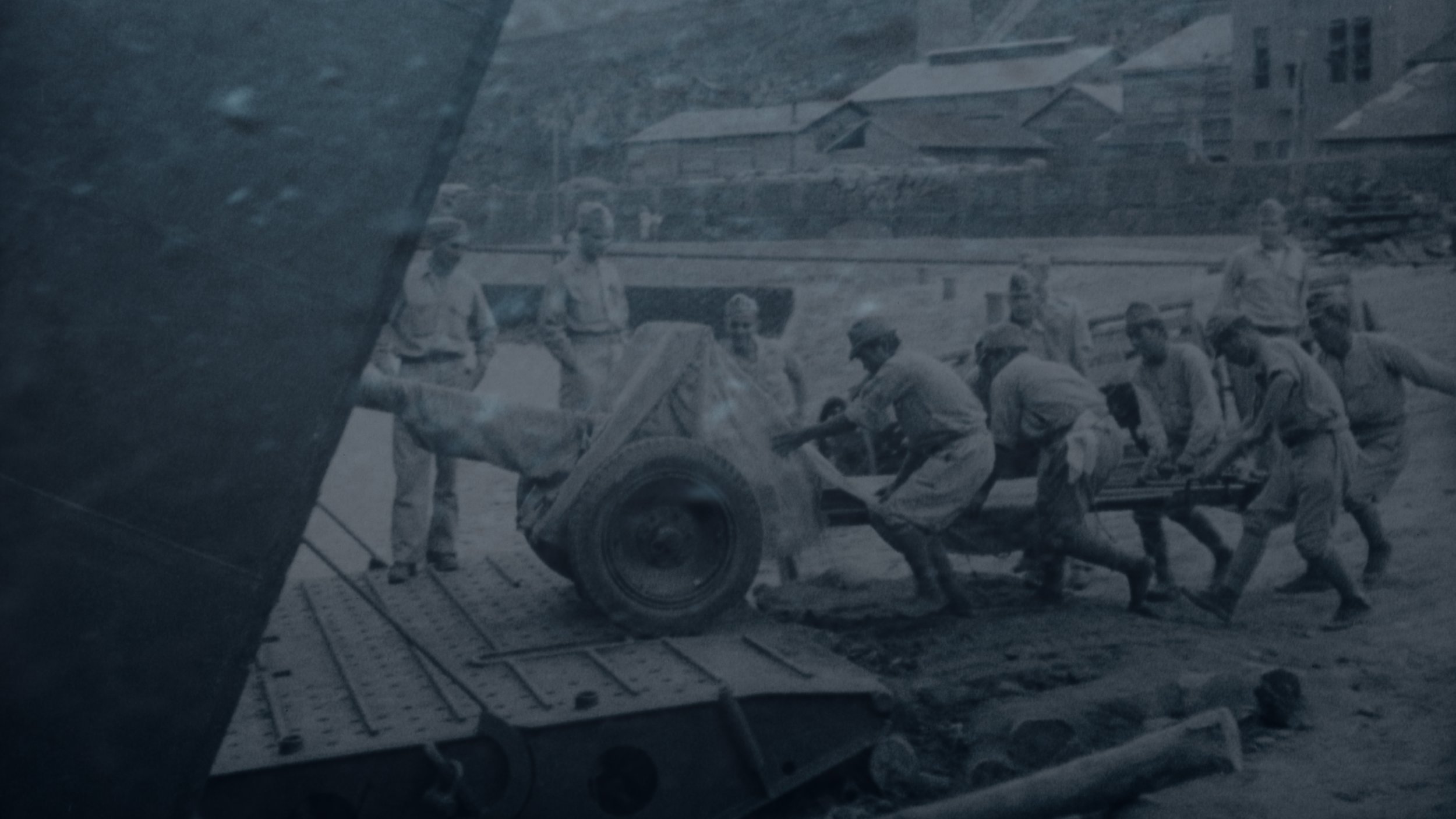
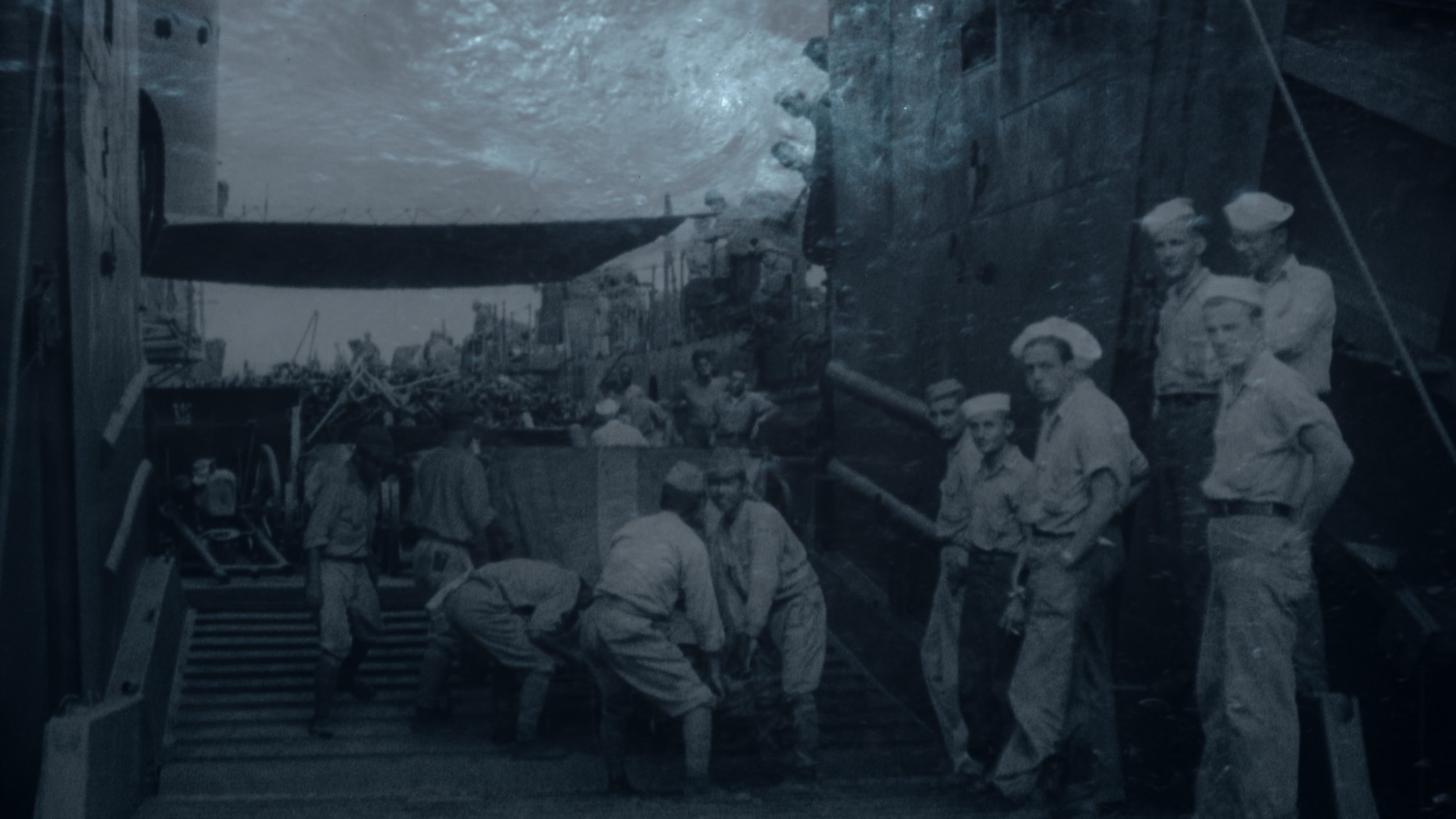


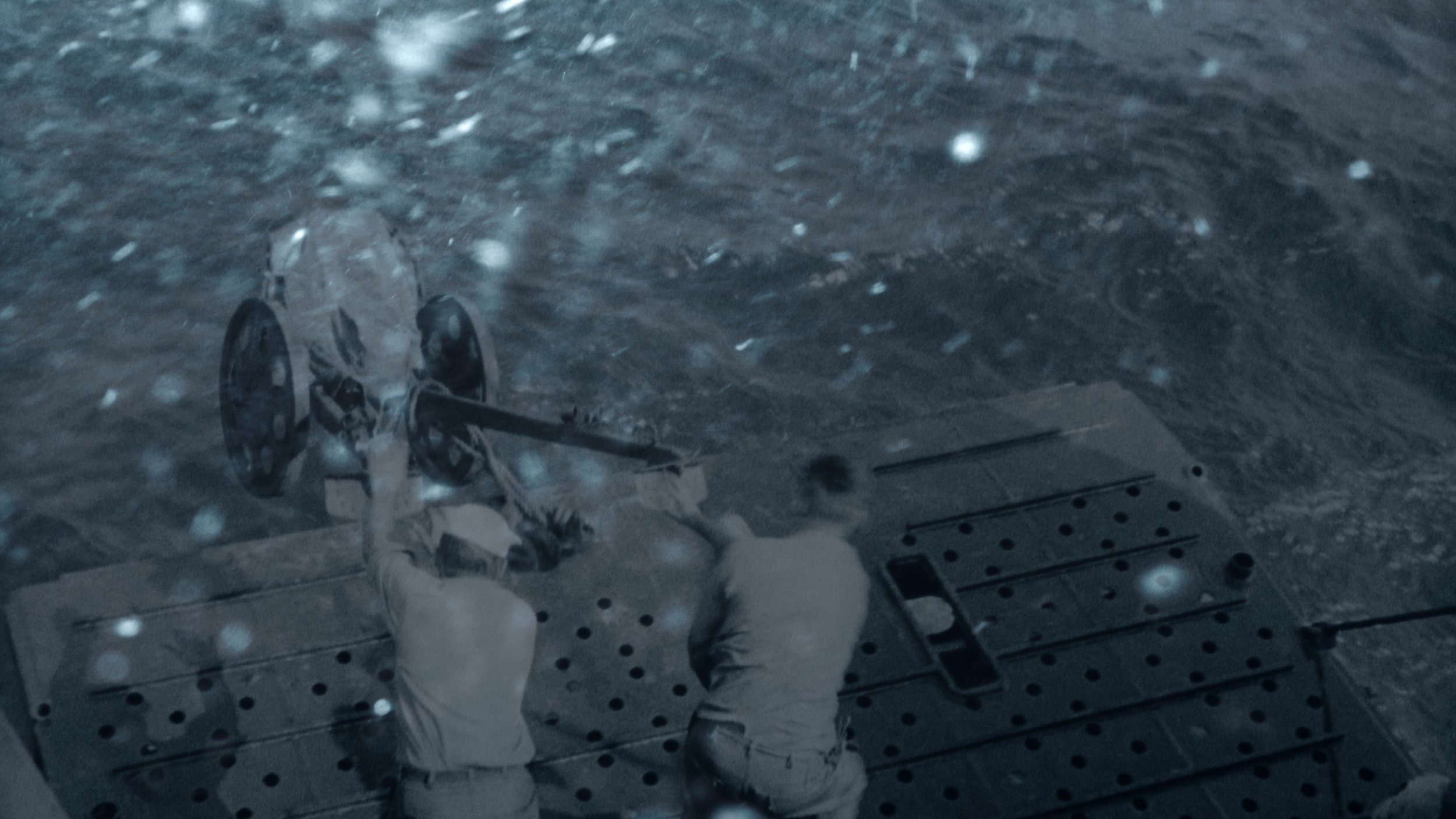
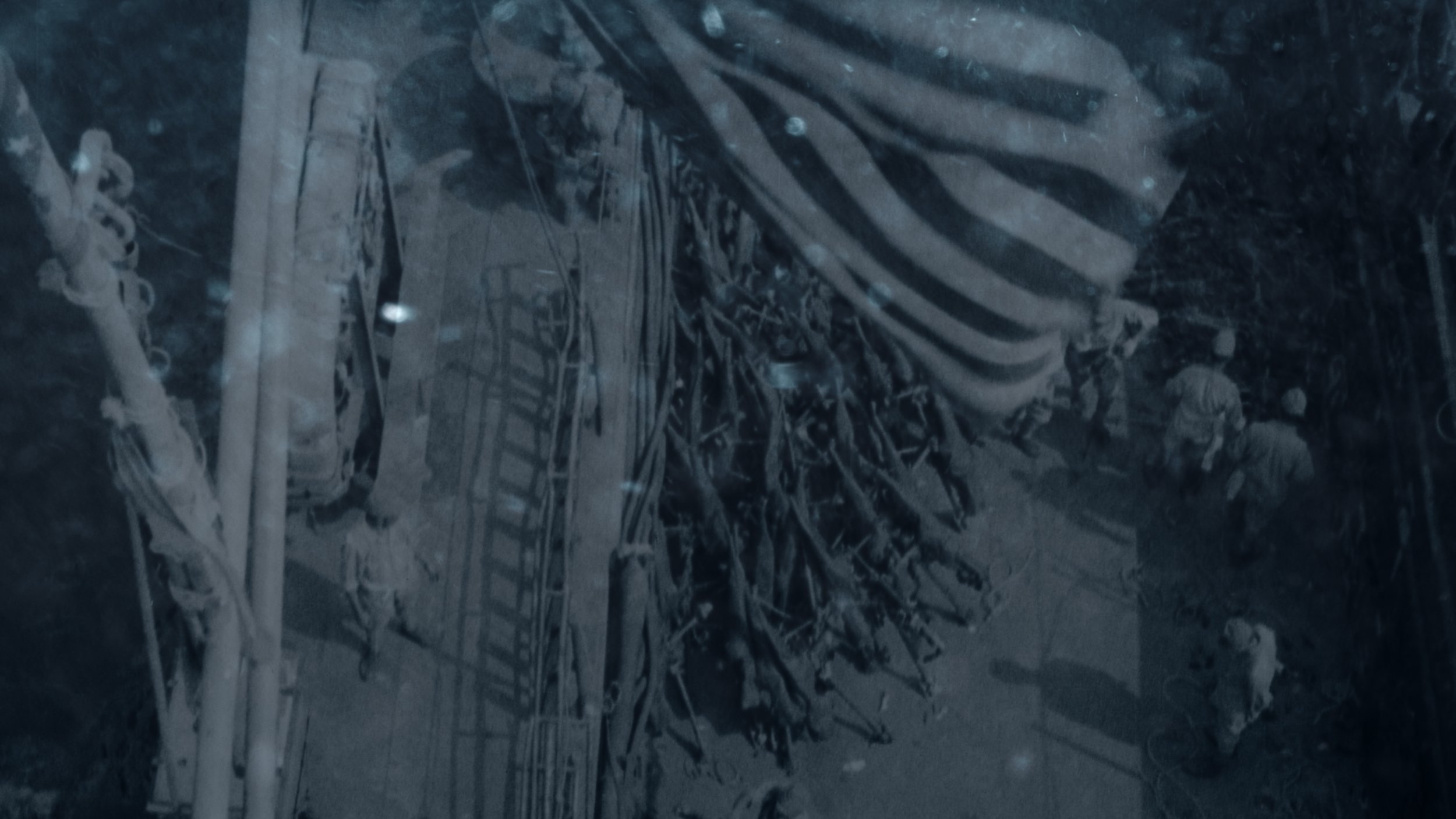
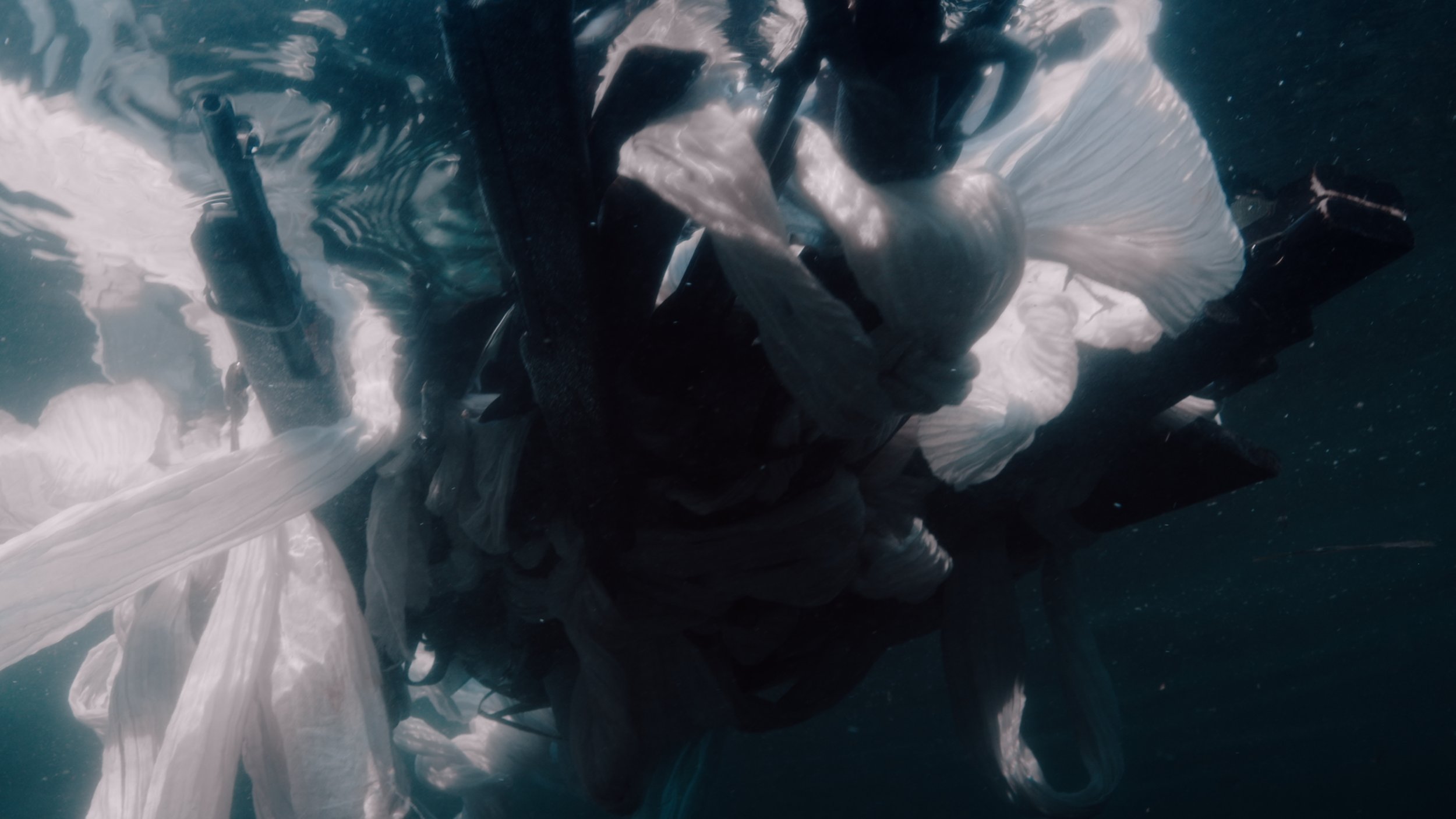
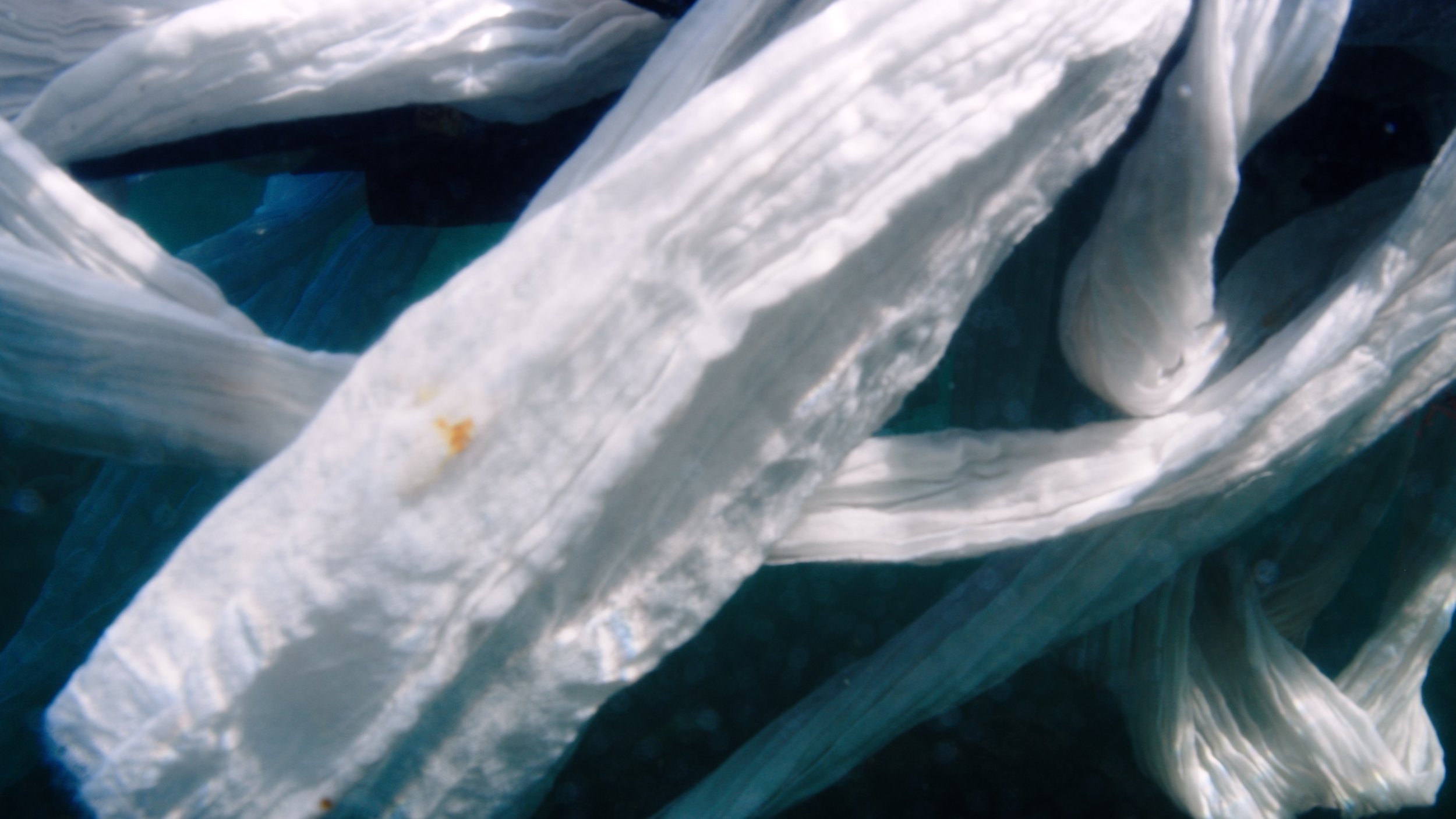
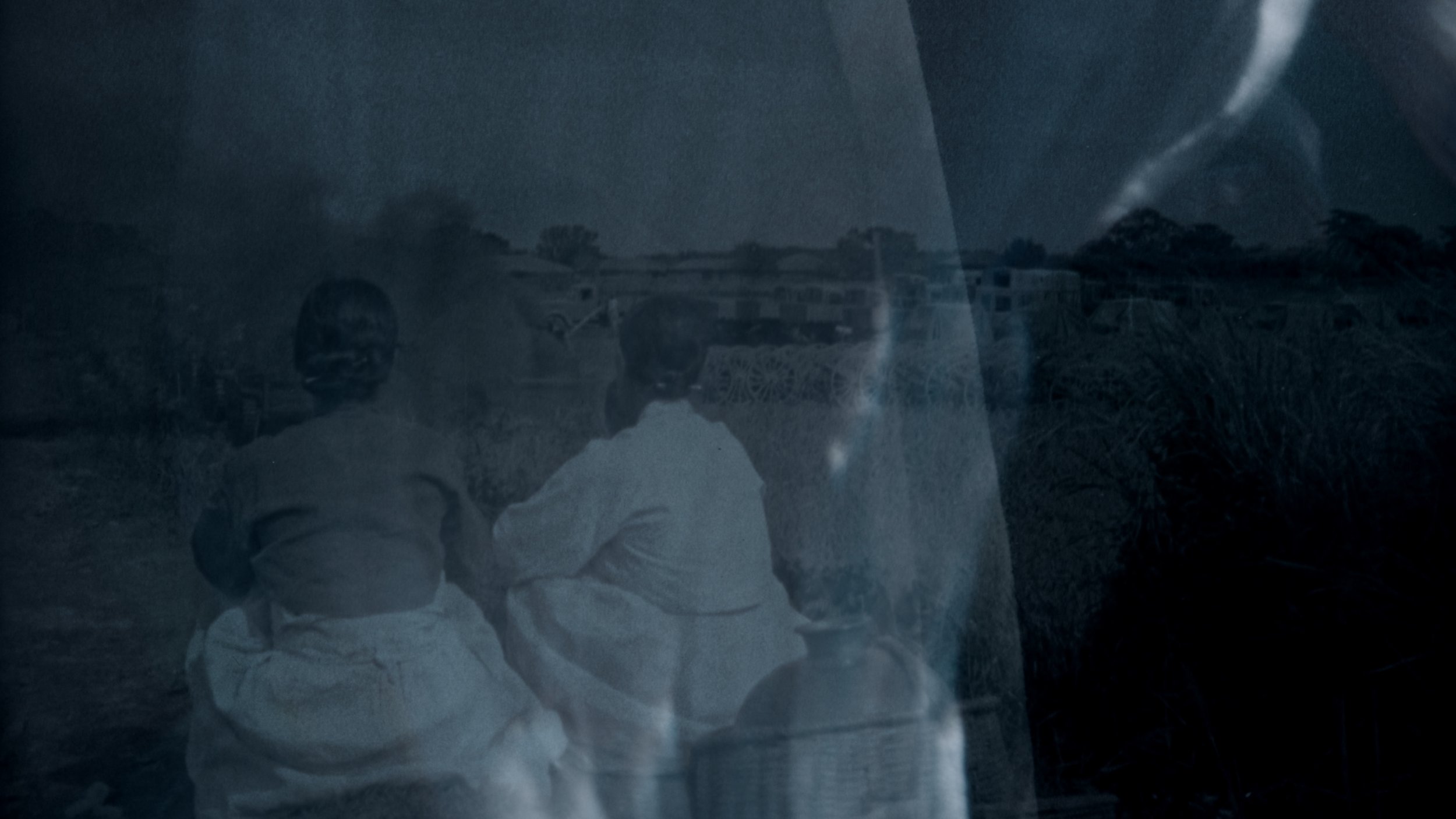

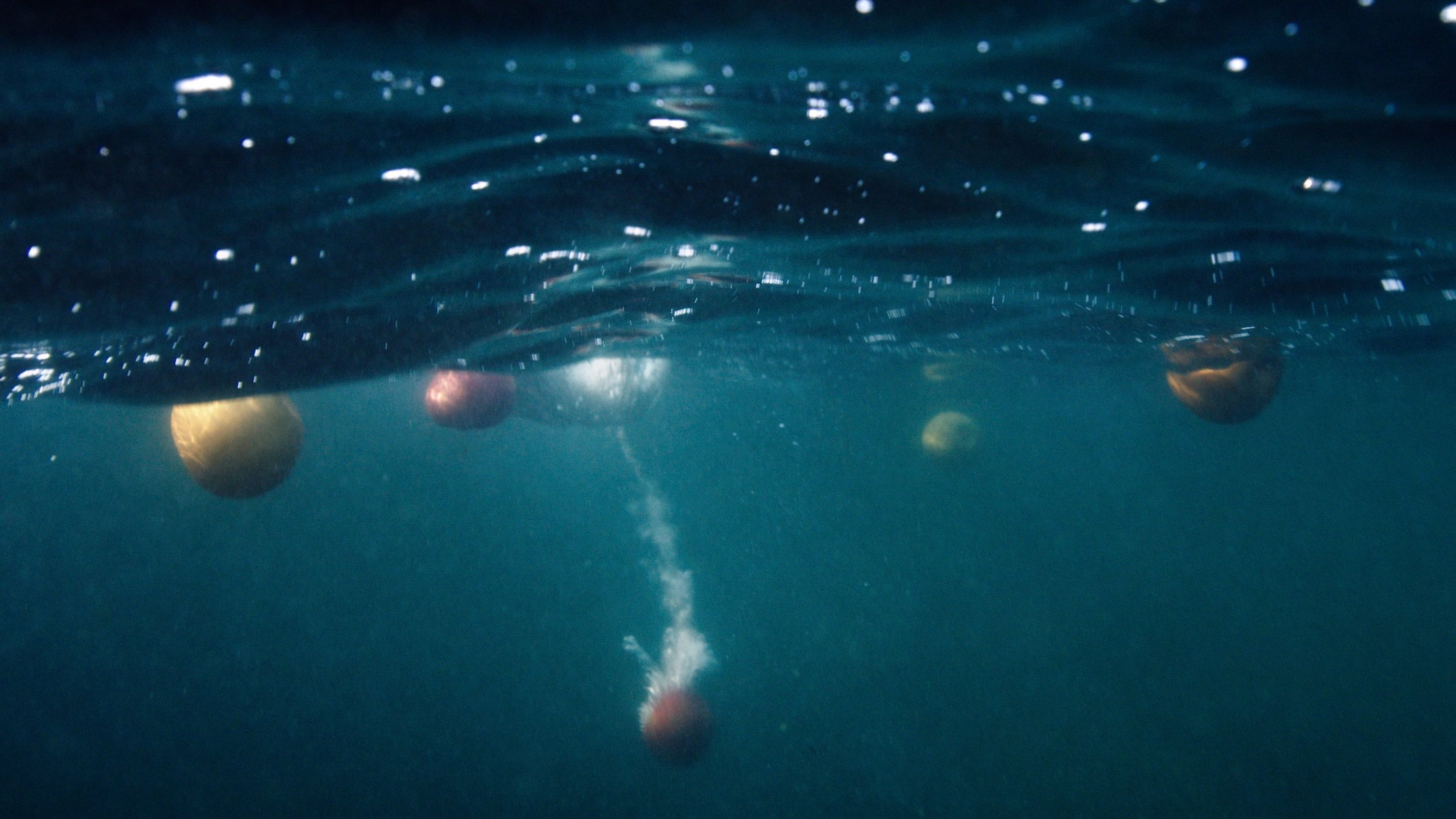
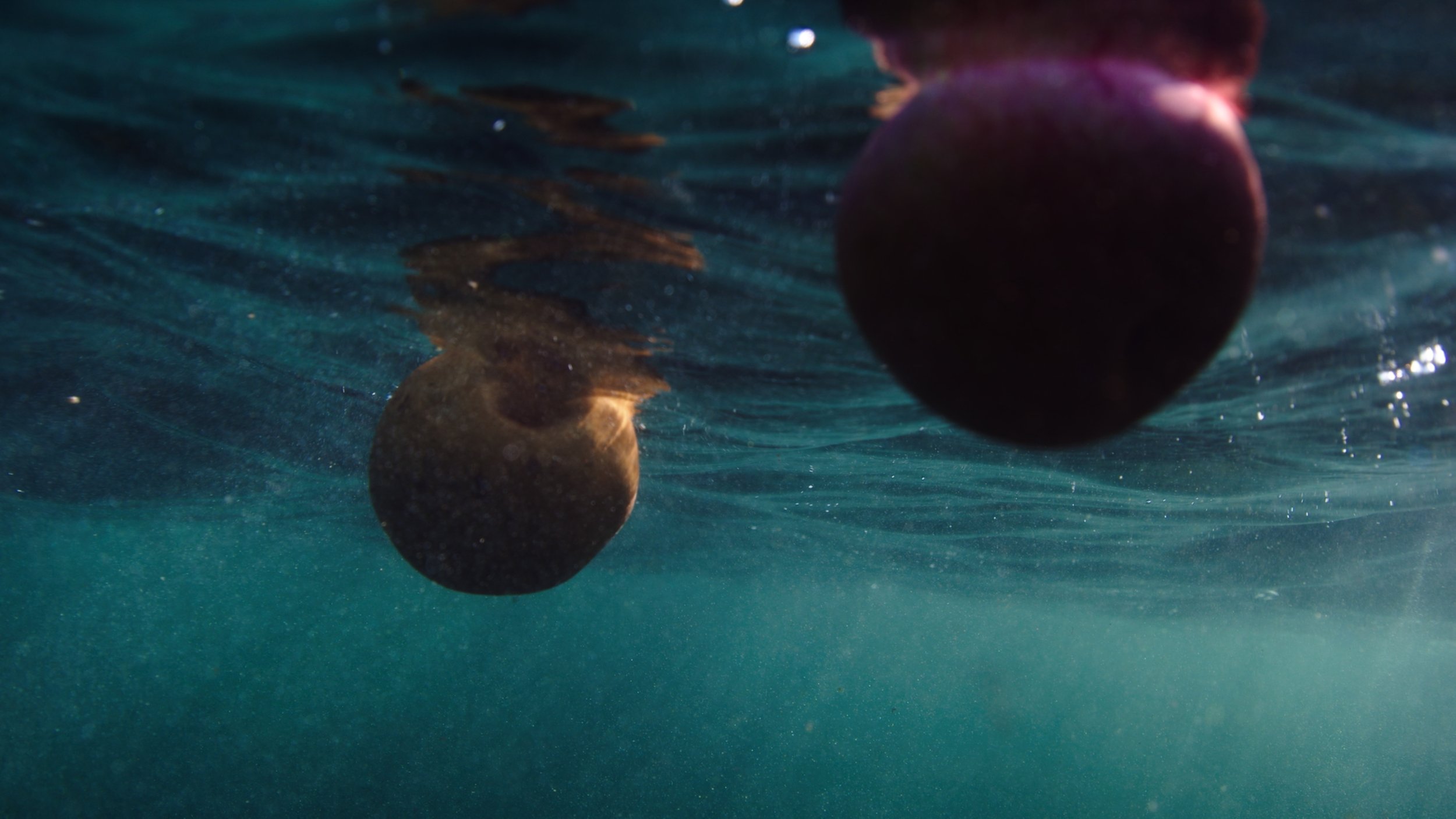
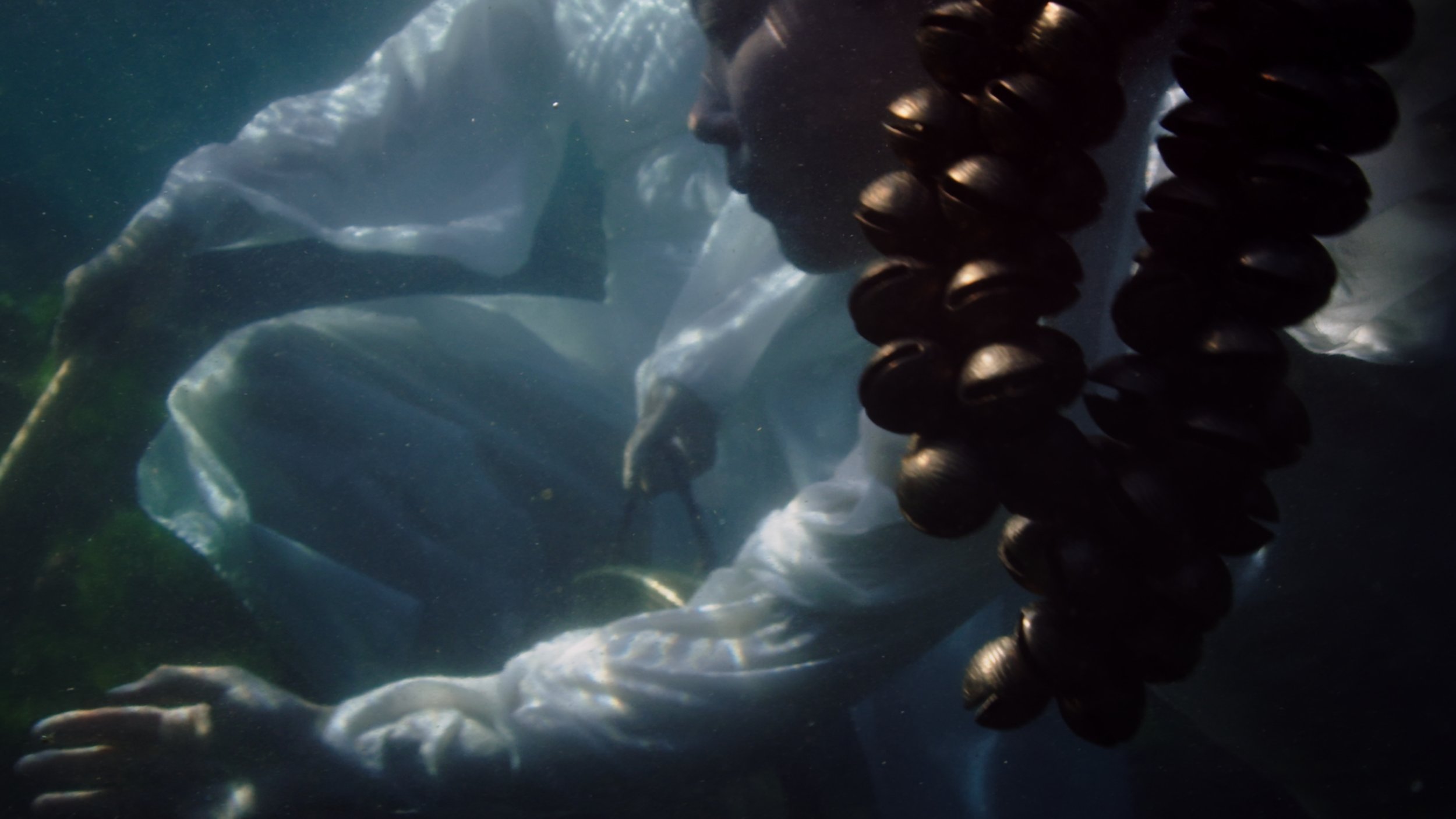
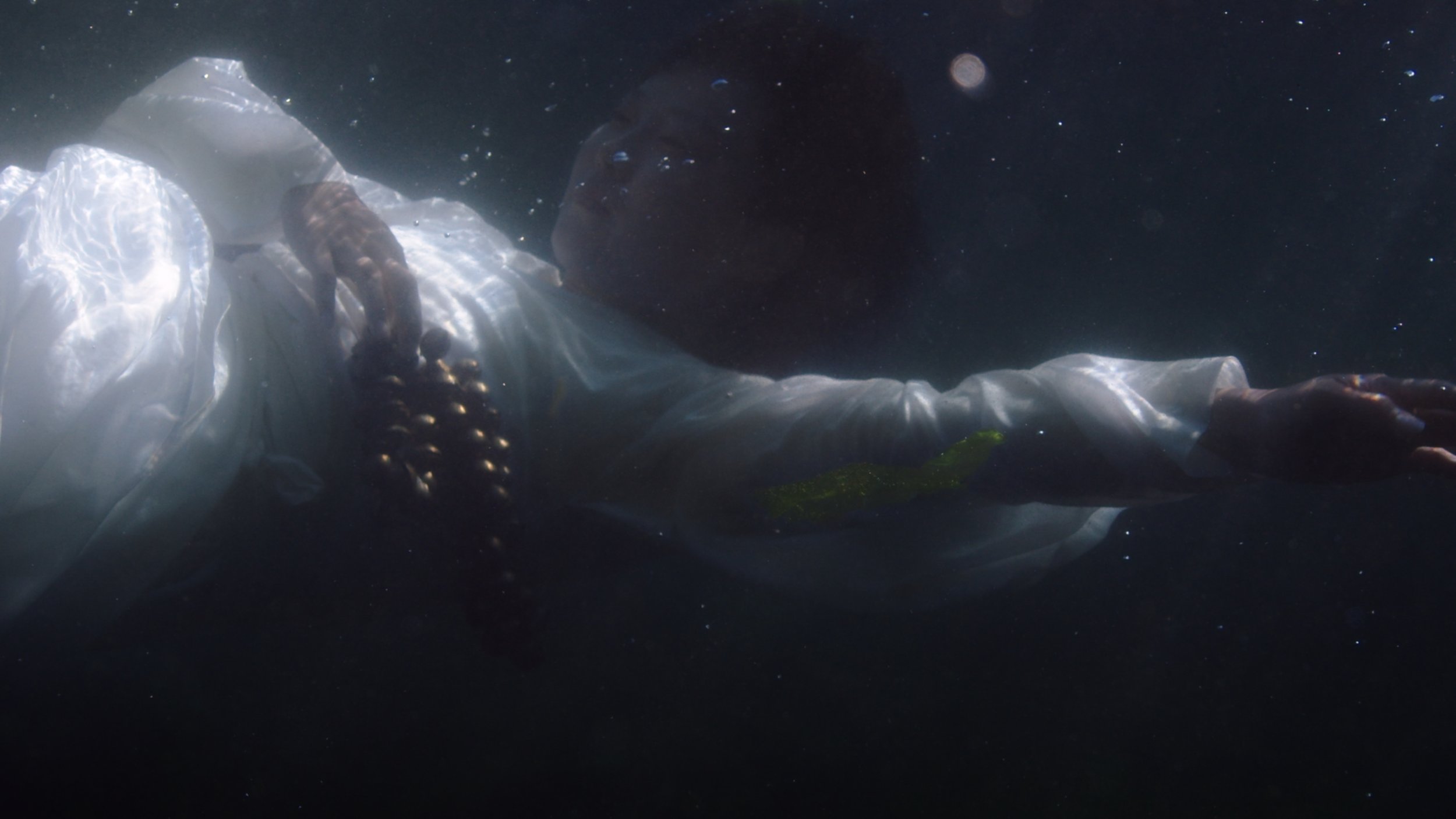
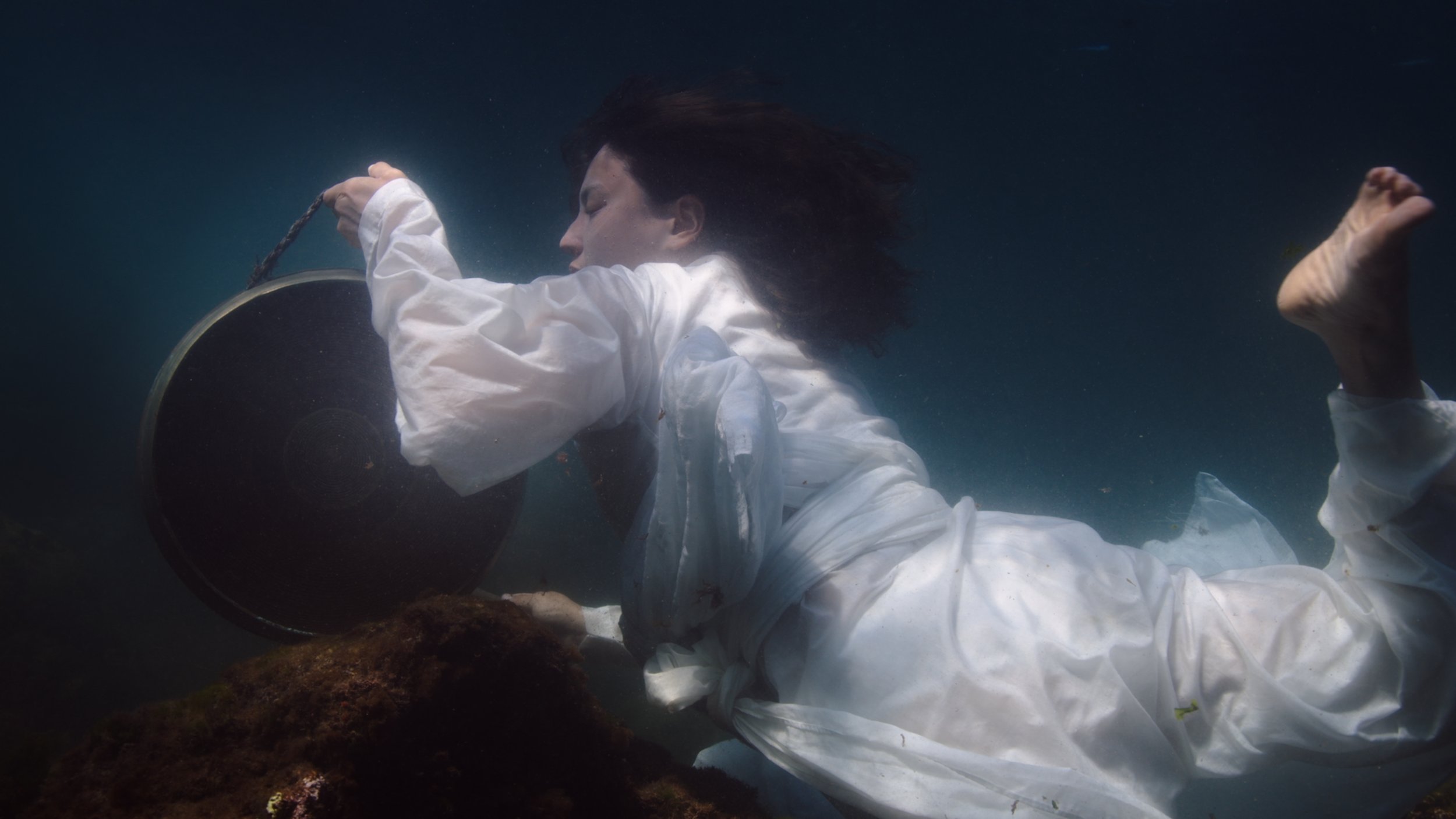
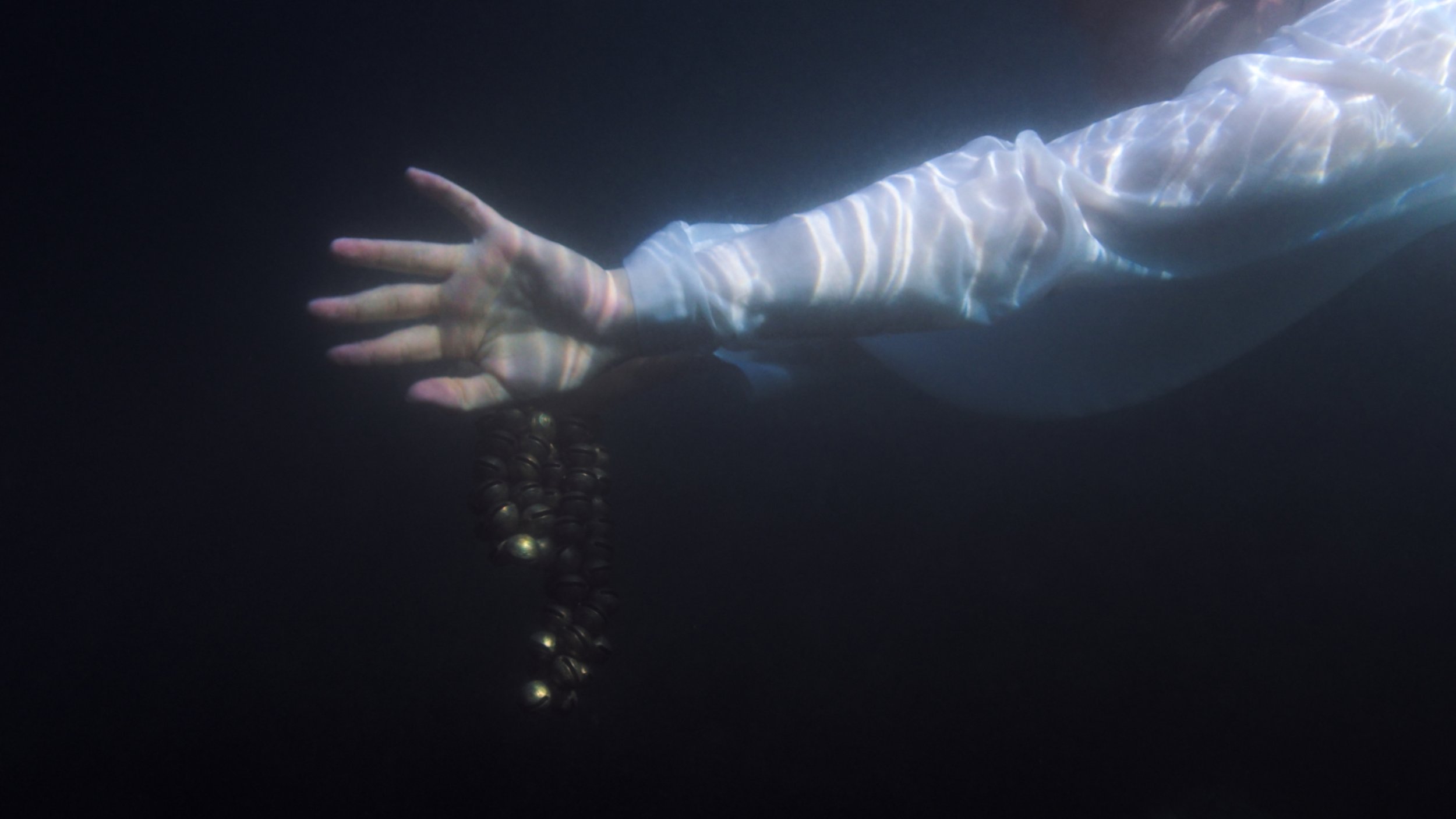
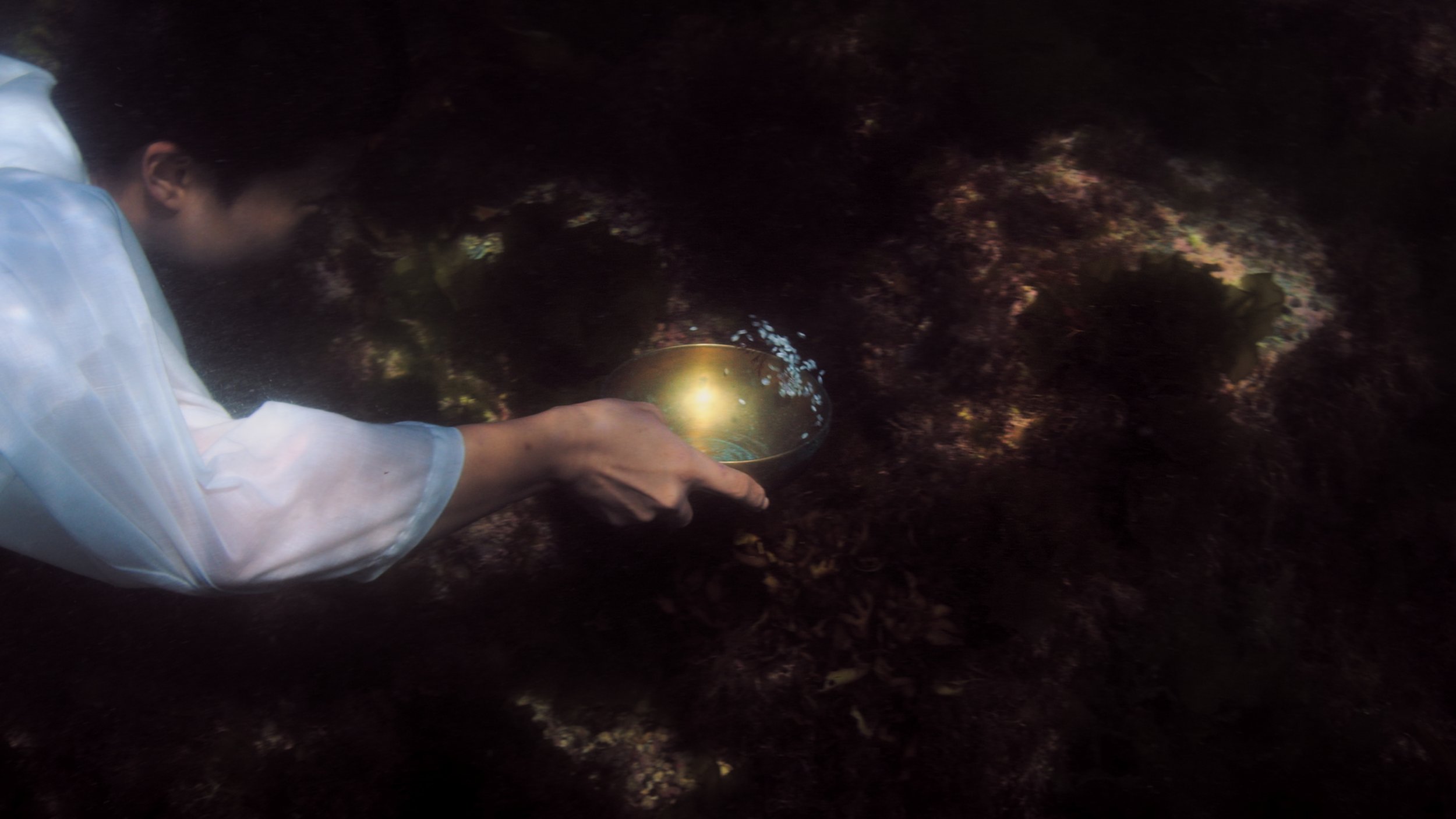

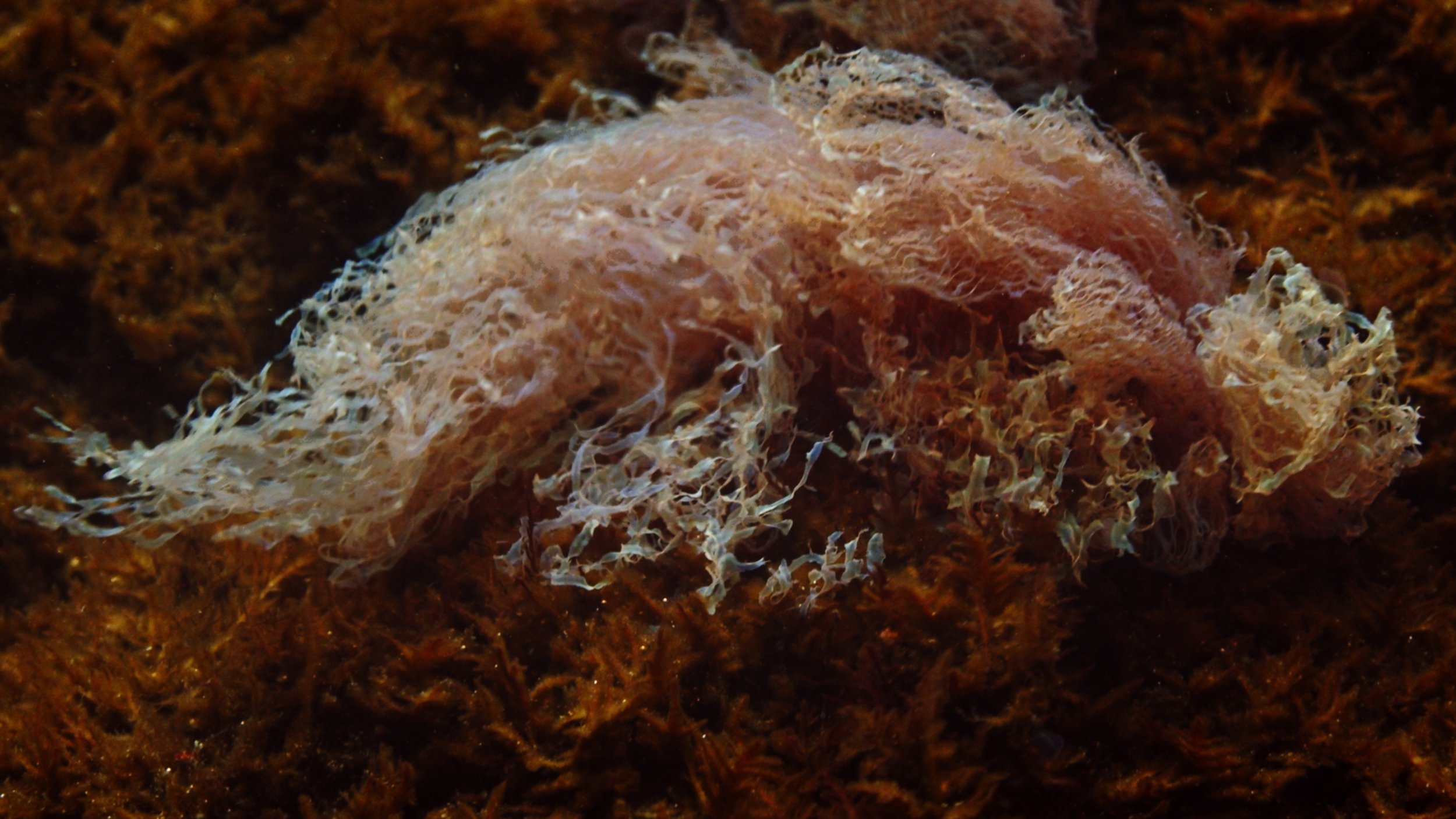
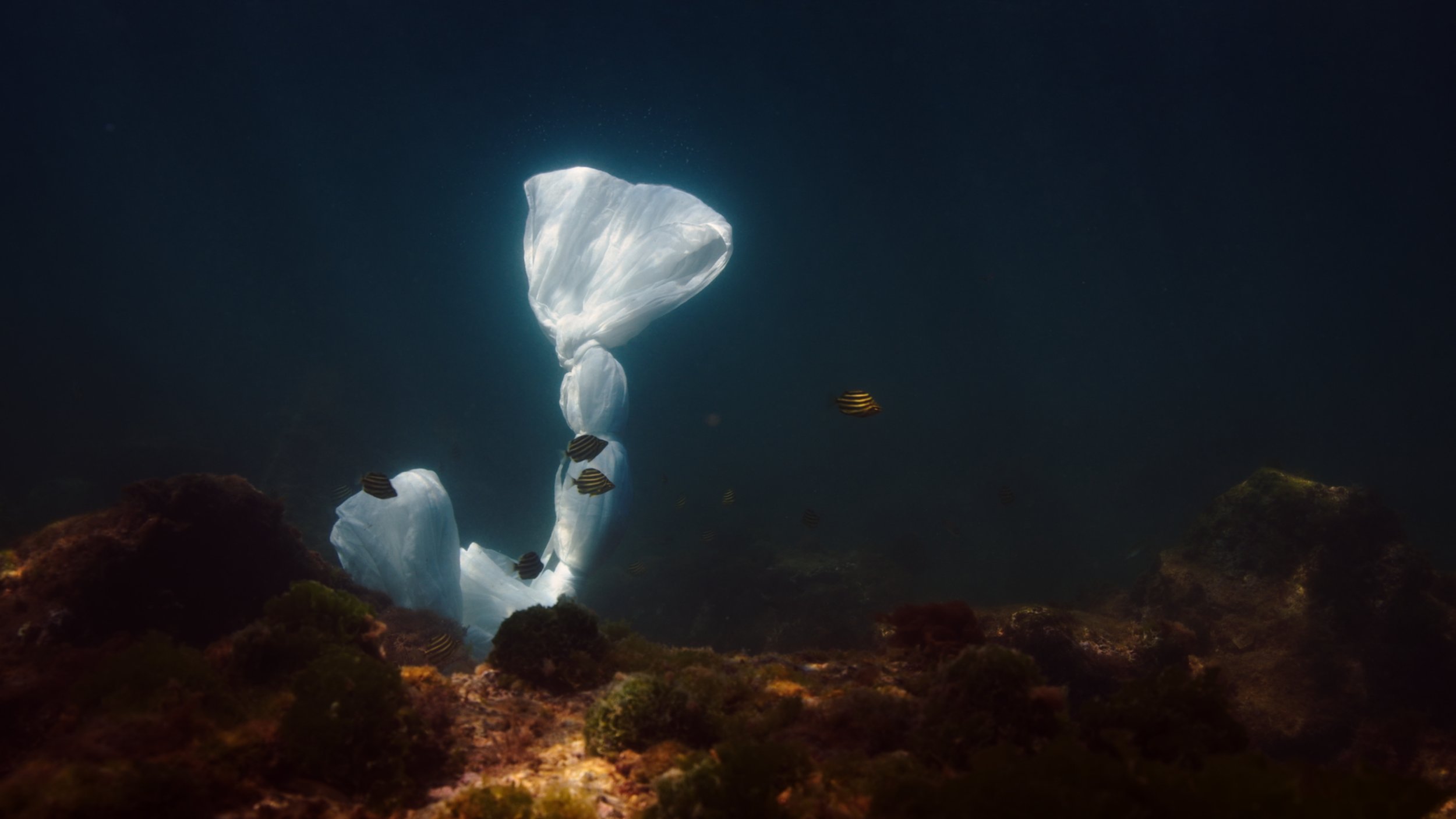
WRECKAGE, 2024
Single channel film. 4K. Color / Stereo sound. Duration: 12 min.
Wreckage is about war, its memory, and its afterlife. Underwater footage shows the ravenous sea superimposed with a US propaganda film. Filmed in Jeju in October 1945, it depicts soldiers loading massive piles of weapons and artillery left by the defeated Japanese Army onto a large ship and dumping them into the sea. A few years later, the Jeju 4.3 Massacre unraveled under the authority of the United States Army Military Government in Korea. During the massacre, unknown numbers of civilians were killed and thrown into the sea, while others tried to flee the island by boat. Such a fate is recalled in a lament by late shaman Koh Sunahn, a survivor of the massacre whose shamanic practice Kaisen documented for a decade until her passing. The lament takes the form of a chant where Koh Sunahn interchangeably assumes the voice of a mother and her deceased son, whose body was never recovered from the sea.
Wreckage evokes several archival, temporal, and sensorial registers. The imperial archive shows war’s devastation to human life and the natural environment whereas the shamanic lament foregrounds enduring loss in the absence of a proper burial. Meanwhile, the sea is approached as an archive of traumatic memories. As the film unfolds an underwater offering is performed and the regenerative force of the sea is portrayed.





Exhibition views: Ieodo (Island Beyond the Sea), Korea Artist Prize 2024, National Museum of Modern and Contemporary Art Korea. Photo- CJY Art Studio.
Wreckage trailer
Directed and edited by Jane Jin Kaisen. Directors of Photography: Guston Sondin-Kung, Jane Jin Kaisen. Shamanic ritual lament: Koh Sunahn. Performers: Yoha, Susan Chu, Mooming, Neulbomal. Line Producer: Soyoung Kwon. Assistant Director: Grace Sungeun Kim. Music: Lior Suliman. Colorist: Edoardo Rebecchi. Dive Masters: Den, Zoe. Costume Design: Nanda. Transcription and translation of shamanic ritual lament: Sunyoung Hong, Kim Seongnae. Translation for subtitles: Han Gil Jang. Archive Film: “Destruction of Japanese Equipment” held by the US National Archives. Sound engineer: Yoram Vazan. Assistance: Pauline Koffi Vandet, Mathieu Johan Hans Hansen. With special thanks: The Jeju 4.3 Peace Foundation, Youngkwan Ban, Kim Seongnae, Ahn Hyekyoung, Hyunjin Kim, Sara Katz, Henninger Media Services. Supported by: The Danish Artistic Research Funding Programme, Ministry of Culture and Korea Artist Prize, Prize from National Museum of Modern and Contemporary Art Korea and SBS Foundation
